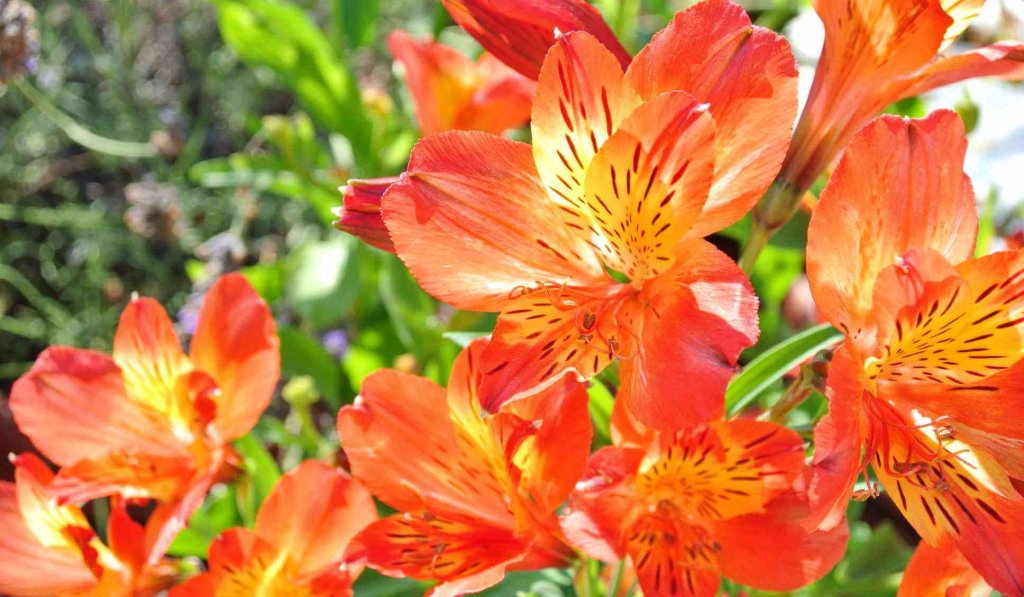Nature’s most splendid gifts often come in the form of vibrant and enchanting flowers.
Among the myriad of floral beauties, orange flowers stand out as radiant symbols of hope, love, and joy.
In this guide, we embark on a journey of orange flower identification, exploring a diverse array of these blooms that can transform your garden into a vibrant oasis.
Orange flowers, reminiscent of the sun’s warmth and brightness, bring not only aesthetic charm but also a touch of positivity to your outdoor spaces.
As we delve into the world of orange flowers, we will discover their unique qualities, from the versatile Chrysanthemums symbolizing fidelity and optimism to the exotic beauty of Strelitzia, also known as the ‘Bird of Paradise.’
Moreover, we will explore the practical aspects, such as their care requirements and medicinal properties, offering a holistic perspective on these blossoms.
Stunning Types of Orange Flowers
1. Chrysanthemum (Chrysanthemum Morifolium)
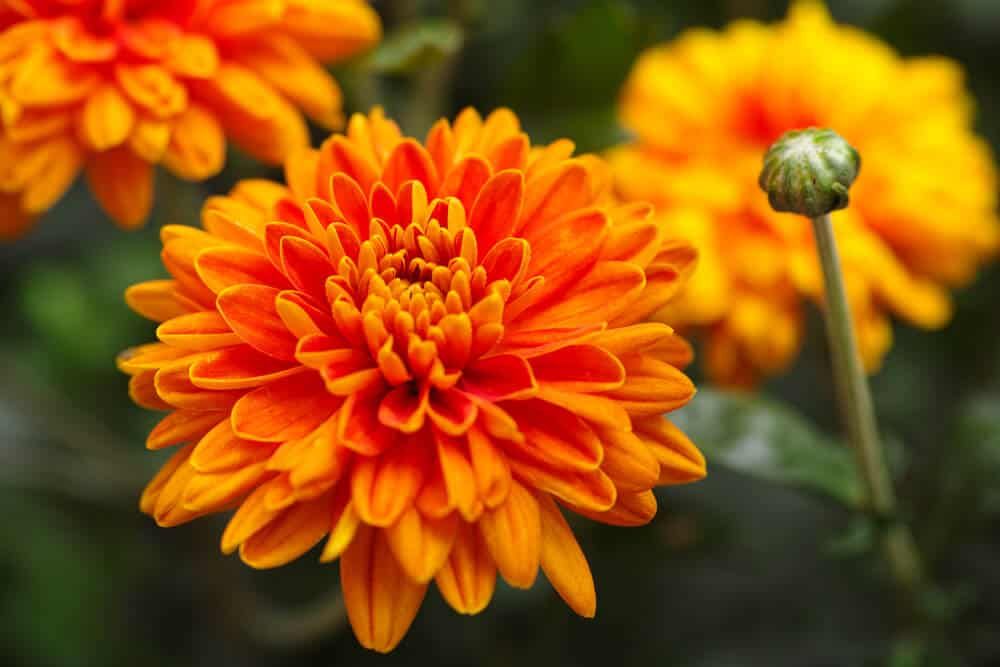
Chrysanthemums, also known as Mums, are versatile and widely recognized for their vibrant orange petals.
These flowers hold great significance as they symbolize fidelity, optimism, and long life.
When it comes to orange flower identification, Chrysanthemums are a popular choice due to their distinct hue and charming appearance.
These perennial beauties thrive in areas with sufficient sunlight and well-drained soil with a pH of about 6.5.
They typically grow in zones 3-9 and require a moderate amount of water.
With their earthy and herby scent, Chrysanthemums not only add a splash of orange color to your garden but also serve as natural insect repellents.
Identification: Look for vibrant orange petals with a herby scent, thriving in zones 3-9 with moderate water requirements.
2. Orange Rose (Rosa Tropicana)
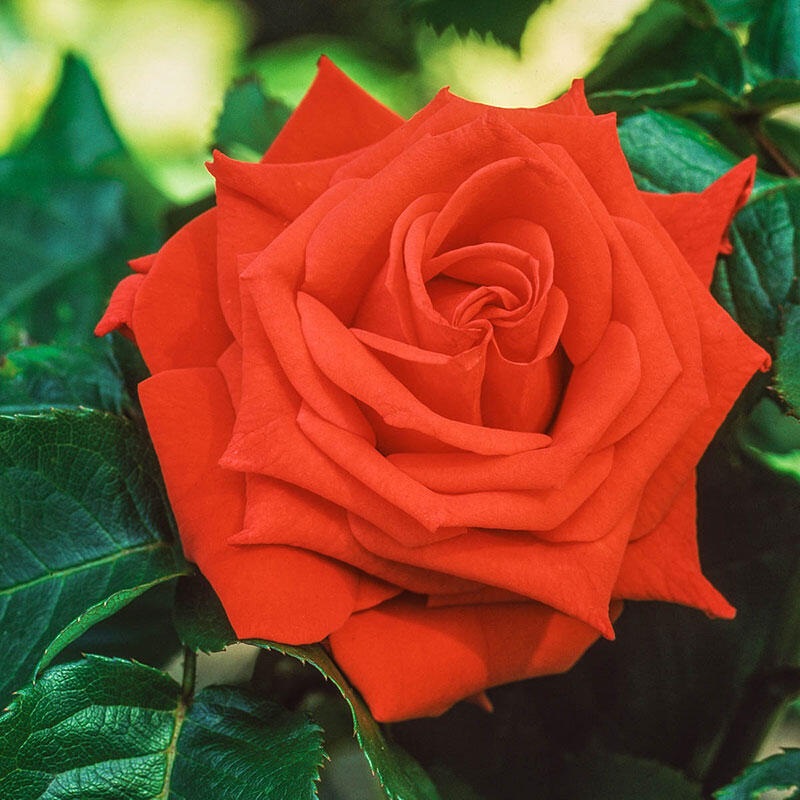
Orange Roses, also known as Rosa Tropicana, offer a warm and familiar touch to any garden or bouquet.
Their vivid orange blooms are a standout feature, making them easy to spot in any orange flower identification quest.
These roses thrive in full sun, requiring at least 4-6 hours of direct sunlight to flourish.
They grow well in zones 3-11 and prefer well-drained, fertile soil rich in nutrients.
Interestingly, these roses do not demand excessive watering, making them relatively low-maintenance additions to your garden.
The transformation of Rosa Tropicana from a bud to a fully bloomed orange flower is a visual delight, representing enthusiasm and warmth.
Identification: Identify by its vivid orange blooms, preferring full sun in zones 3-11 with minimal watering needs.
3. Autumn Orange Tulips (Tulipa spp)
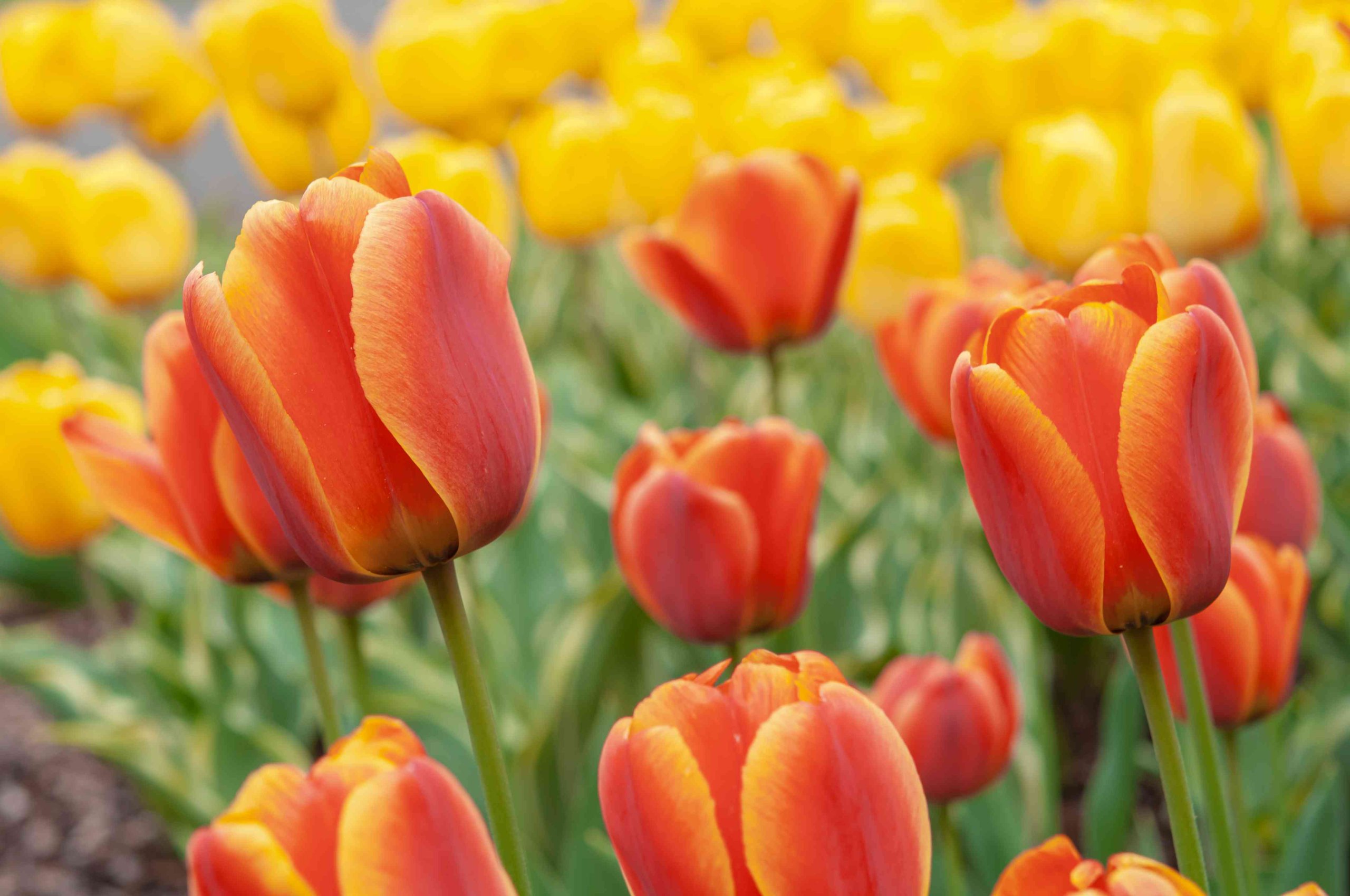
Autumn Orange Tulips, as the name suggests, are perfect for adding a pop of orange to your garden during the fall season.
These perennials are renowned for their substantial blooms, making them a striking choice for orange flower identification.
To cultivate these tulips successfully, provide them with well-drained sandy loam soil that retains moisture without becoming overly saturated.
Their preferred pH range is 6-7, and they grow best in zones 3-8.
While some varieties need a fair amount of sunlight, others can thrive in partial shade, making them adaptable to different garden conditions.
The unique spicy scent of these orange tulips adds an extra layer of charm to your garden, making them a delightful addition for both aesthetics and fragrance.
Identification: Recognize them as substantial orange tulips with a spicy scent, suited for zones 3-8 and varying sunlight requirements.
4. Ranunculus Asiaticus’Elegance Orange’ (Ranunculus asiaticus)

Ranunculus Asiaticus ‘Elegance Orange’ is an adorable orange flower variety known for its intricate and soft salmon-orange petals.
In the realm of orange flower identification, this beauty stands out with its unique appearance.
These charming flowers flourish in average moist and well-drained soil, reaching heights of 16-18 inches.
They are best suited for zones 7-11 and require moderate watering.
The acidic pH of the soil suits them well, and they thrive in ample sunlight.
While they may not possess a strong scent, their eye-catching design more than compensates for it.
Whether treated as perennials or annuals, these orange flowers are sure to enhance the visual appeal of your garden.
Identification: Notice the intricate and soft salmon-orange petals, thriving in well-drained soil in zones 7-11.
5. Trumpet Honeysuckle (Lonicera sempervirens)
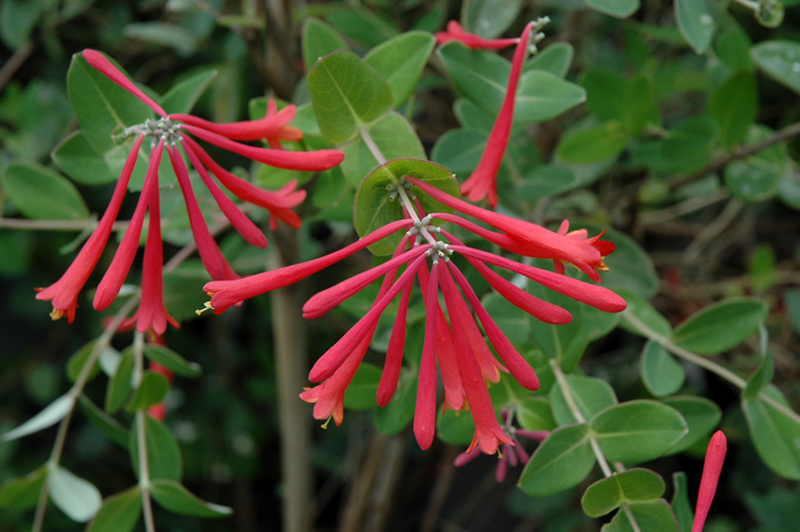
Trumpet Honeysuckle, scientifically known as ‘Lonicera sempervirens,’ adds a touch of elegance to orange flower identification.
These perennials are unique due to their trailing nature, making them a captivating choice.
To nurture Trumpet Honeysuckle successfully, consistent watering is essential until the flowers are established.
They thrive in zones 4-9 and prefer soil with a pH range of 3.7 to 6.8. While they thrive in full sun, partial shade can also be suitable.
The vibrant orange hue of these flowers is a magnet for hummingbirds and butterflies.
Identification: Look for trailing vines and vibrant orange hue, suitable for zones 4-9, and attracting hummingbirds.
6. Dahlia (Dahlia pinnata)
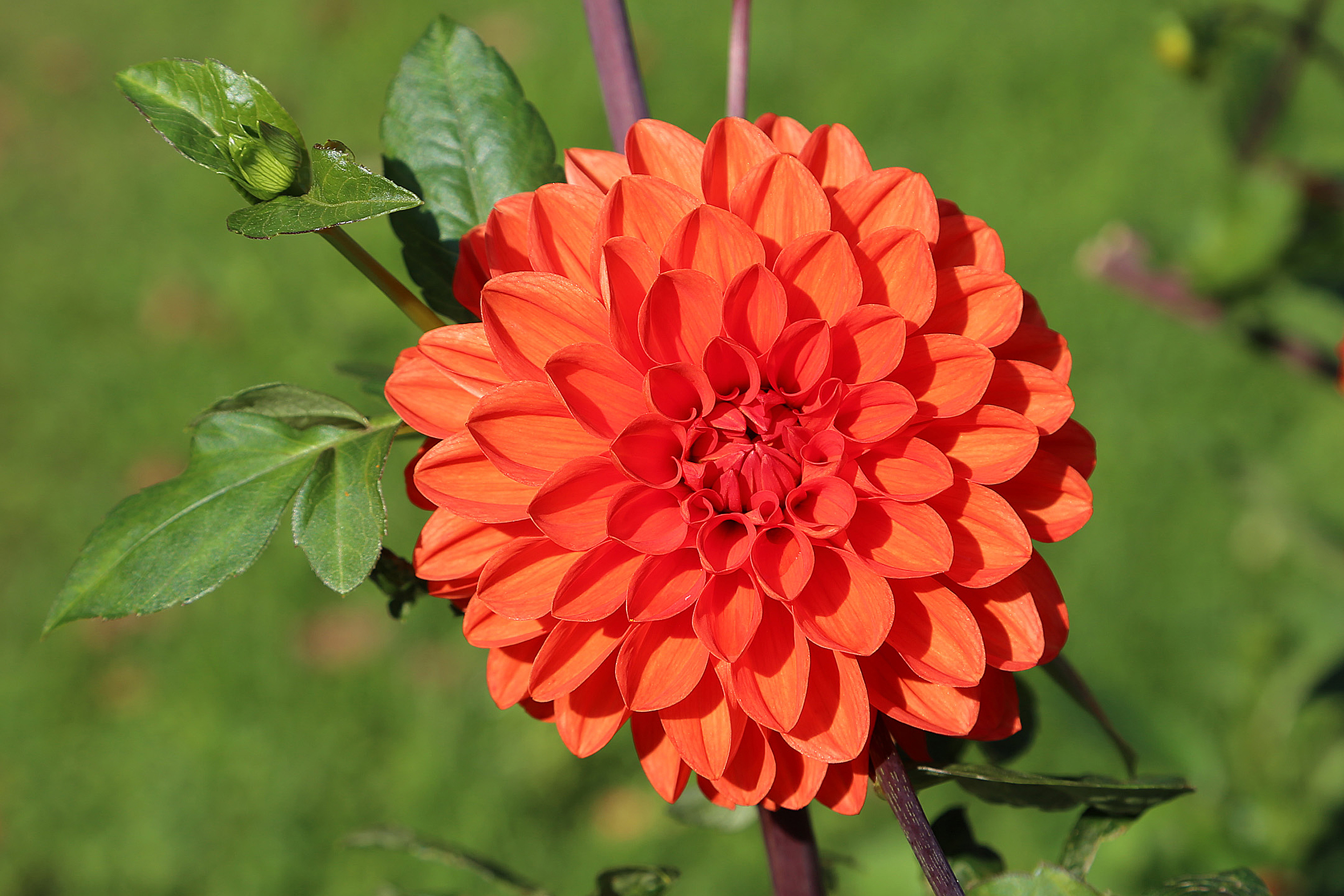
Native to Mexico, Dahlia is a captivating orange flower with spiny petals, belonging to the same family as sunflowers and daisies.
Dahlia’s unique appearance makes it a standout choice for orange flower identification.
Plant Dahlia when the ground temperature reaches at least 60 degrees or more.
They thrive in full sun and require moist, well-drained soil. Dahlia typically grows in hardiness zones 8-10.
While they possess a sweet floral scent, it’s crucial not to overwater them, especially when potted.
Dahlia’s vibrant orange petals make them a favorite for both gardens and floral arrangements, providing a burst of color and charm.
Identification: Identify by its spiny petals, thriving in full sun in hardiness zones 8-10.
7. Poppy (Papaver spp)
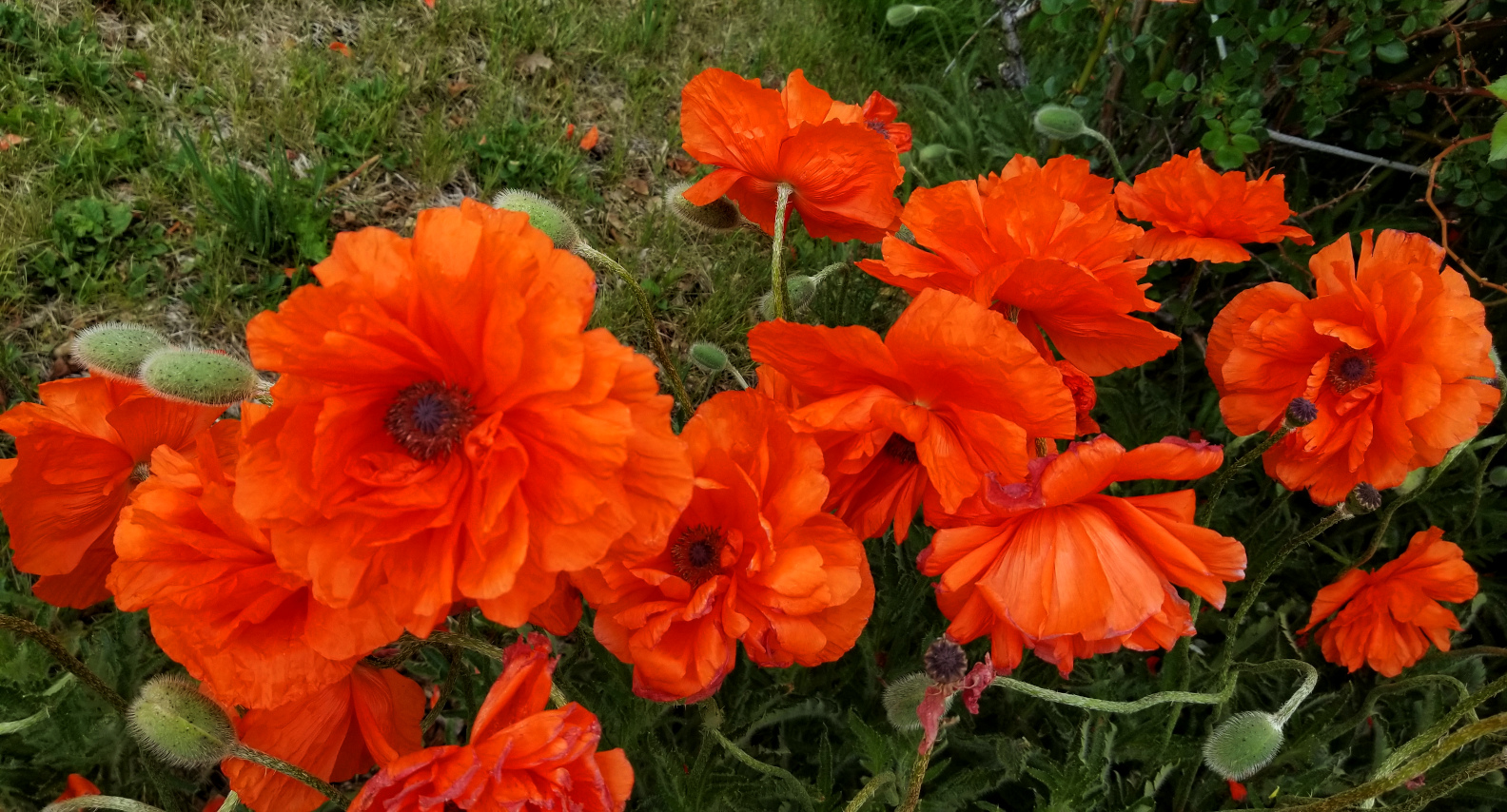
Poppy, with its vibrant orange blooms, is a striking addition to any garden and easily identifiable in the world of orange flower identification.
These flowers can be cultivated as both perennials and annuals.
Poppy thrives with an ample amount of sun and requires relatively minimal water.
They typically grow in zones 5 to 11 and prefer soil with a pH range of 6.5 to 7.4.
Although their scent is somewhat musky, their distinctive orange hue brings warmth and charm to any garden.
The unique appeal of poppies lies in their versatility, with the ability to thrive in various climatic conditions.
Whether you choose to grow them as perennials or annuals, their stunning orange petals create a captivating visual impact.
Identification: Recognize vibrant orange blooms, suitable for zones 5-11, and varying sunlight requirements.
8. Kalanchoe (Kalanchoe blossfeldiana)

Kalanchoe, a heat-loving succulent perennial, is an eye-catching orange flower that can thrive in various climates.
These tiny beauties are perfect for adding a touch of orange to your garden or balcony.
Growing up to 12 inches tall, Kalanchoe requires plenty of light and sandy soil.
They can tolerate mild winters and are suited for growing in zones 10, 11, and 12. Minimal watering, typically two to three times a week, is sufficient for their care.
When it comes to orange flower identification, Kalanchoe’s distinctive appearance and low-maintenance nature make them a delightful choice.
Their petite yet vibrant orange blossoms have an unmistakable charm, adding a burst of color to your outdoor or indoor space.
Identification: Notice petite, heat-loving succulents with vibrant orange blossoms, suitable for zones 10-12.
9. Kniphofia (Kniphofia uvaria)

Kniphofia, also known as Torch Lily, is a captivating orange flower that attracts not only the eye but also butterflies and birds.
If you’re a nature enthusiast, these flowers are an ideal addition to your garden.
Thriving in full sun and well-drained fertile soil with a pH of 6.0 to 7.0, Kniphofia can be found in zones 5-9.
Their spicy scent, reminiscent of orange tulips, adds to their allure.
When it comes to orange flower identification, the Torch Lily’s tall, vibrant spikes of orange blooms make them a standout choice for adding a burst of color and life to your outdoor space.
The hummingbirds and butterflies it attracts create a lively and enchanting garden atmosphere.
Identification: Look for tall, vibrant spikes of orange blooms, attracting butterflies and birds, suited for zones 5-9.
10. Strelitzia (Strelitzia reginae)
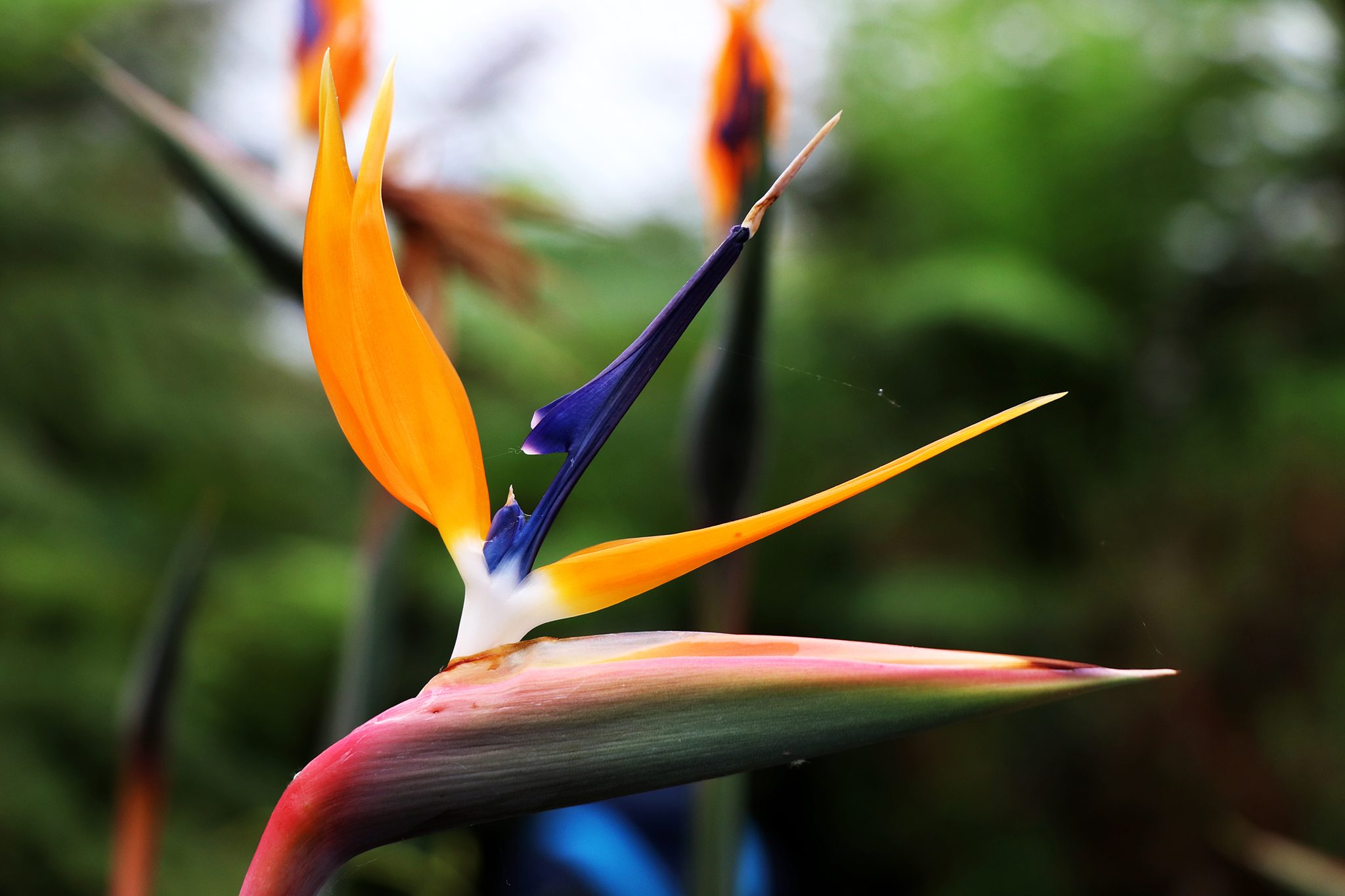
Strelitzia, known as the ‘Bird of Paradise,’ is a unique orange flower that can be grown indoors and doesn’t demand excessive sunlight.
Whether potted or planted in your backyard, they add a touch of the exotic to your space.
Providing adequate water to keep the soil moist without overwatering is crucial for their care.
They prefer well-drained soil and are sensitive to harsh cold temperatures.
With its strong and sweet fragrance and the added bonus of other colors in the same flowers, Strelitzia is a standout choice for an orange flower and a favorite among garden enthusiasts.
Its captivating appearance and ability to thrive indoors make it a versatile and stunning addition to any home garden or indoor space.
Identification: Recognize the ‘Bird of Paradise’ with exotic orange flowers, suitable for indoor and outdoor spaces.
11. Hemerocallis (Hemerocallis spp)

Hemerocallis, commonly known as Daylilies, are perennial orange flowers with distinctive varieties.
Their adaptability to different climatic conditions and soil types makes them an attractive option for orange flower identification.
These flowers require moist and well-drained soil, and they thrive in both sunlight and moderate shade. They typically space around 12 to 18 inches apart and mature well in zones suitable to Asia, their native region.
Their variety of sizes, colors, and blooming patterns ensure that you can find the perfect Daylily to enhance your garden’s beauty.
Identification: Identify by their adaptability to different climatic conditions and soil types.
12. Marigold (Tagetes spp)
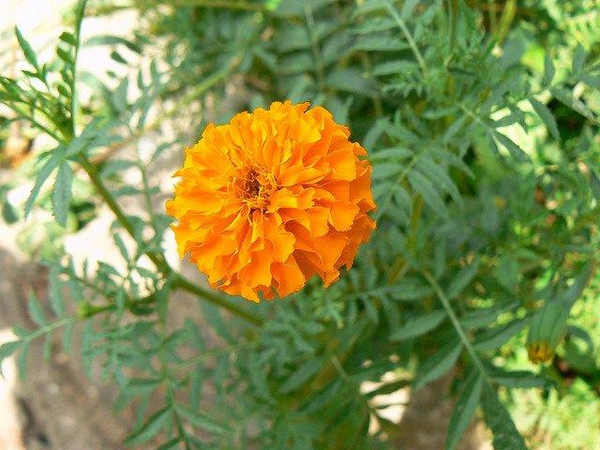
Marigold, aptly named for its golden shine, is one of the most recognizable and brightest orange flowers found in nature.
It’s a favorite for gardens, both outdoor and indoor, and is widely used in India for religious offerings.
Marigold’s distinctive 3-foot tall stems and 3 to 4-inch heads make it an iconic choice.
It thrives in sunny climates and is typically grown as an annual or perennial, depending on your preference.
Beyond its aesthetic appeal, Marigold boasts medicinal properties, containing essential oils and substances that can aid in healing rashes.
This versatile flower adds vibrancy, positivity, and a touch of spirituality to any garden or space.
Identification: Notice the distinctive 3-foot tall stems and 3 to 4-inch heads with golden shine, suitable for sunny climates.
13. Viola (Viola spp)
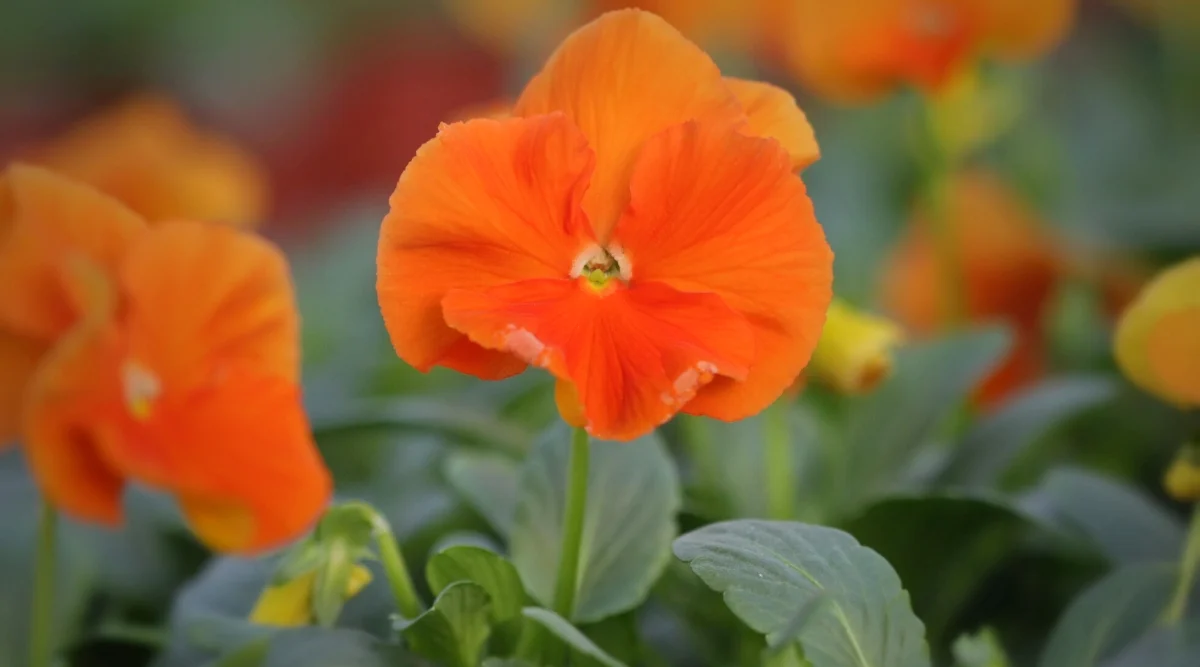
Viola, these tiny yet enchanting treats, have the power to lift your spirits and bring a smile to your face.
Known for their sweet and misty fragrance, Violas are a delightful choice for both indoor and outdoor gardens.
Growing up to 9-10 inches tall, Violas prefer sandy loam soil and thrive in cool and moist surroundings.
They are perennial and can even survive in full shade if you prefer them as indoor plants.
Their charm lies not only in their appearance but also in their ability to brighten your mood and make you forget negativity, all while releasing their captivating fragrance.
Identification: Recognize tiny yet enchanting treats with sweet and misty fragrance, suitable for cool and moist surroundings.
14. African Daisy (Osteospermum)

African Daisy, also known as Gerbera, may appear as a single flower, but it’s actually a cluster of numerous small floral beauties.
These vibrant, large flowers add beauty both indoors and outdoors. They thrive in full sun and require a sufficient amount of water.
Fertilizing the soil aids in their growth, and regularly removing dry flowers creates space for new blooms.
In the realm of orange flower identification, African Daisy stands out with its vibrant and unique appearance.
It attracts not only the eye but also pollinators like hummingbirds and butterflies, making it a captivating addition to any garden.
Identification: Look for vibrant, large flowers thriving in full sun and attracting pollinators.
15. Milkweed (Asclepias spp)

Milkweed, famously known as “butterfly weed,” lives up to its name by fascinating butterflies and adding a unique touch to your garden.
Its bright orange flowers create a stunning sight, especially during summer.
These flowers have minimal water requirements and thrive in dry soil conditions, making them ideal for summer planting.
They release a sweet fragrance, making them alluring to both humans and butterflies.
Its ability to thrive in various climatic conditions, including droughts, proves that its true beauty lies beneath its unassuming appearance.
These orange flowers not only add visual charm but also contribute to the enchanting dance of butterflies in your yard.
Identification: Identify by its bright orange flowers, minimal water requirements, and attraction to butterflies.
16. Blooming Globeflower (Orange Princess)
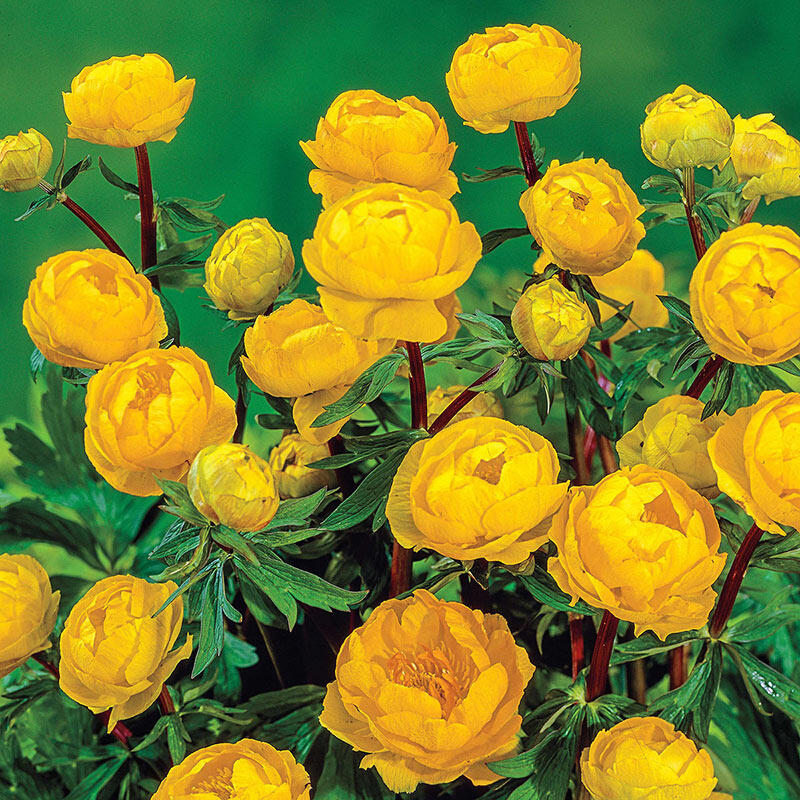
Blooming Globeflower, also known as Orange Princess, is a striking addition to any garden that’s easily identifiable among orange flowers.
Its distinctive yellowish-orange tint sets it apart.
These flowers thrive in partial shade, making them suitable for planting beneath large trees.
They prefer consistently moist and well-drained soil, and they excel in wet areas, making them perfect for gardens near riverbeds.
With a growth height exceeding 2 inches and adaptability to hardiness zones 5-8, this flower adds elegance and charm to outdoor spaces.
Identification: Notice its yellowish-orange tint and suitability for partial shade.
17. Trumpet Vines (Campsis radicans)
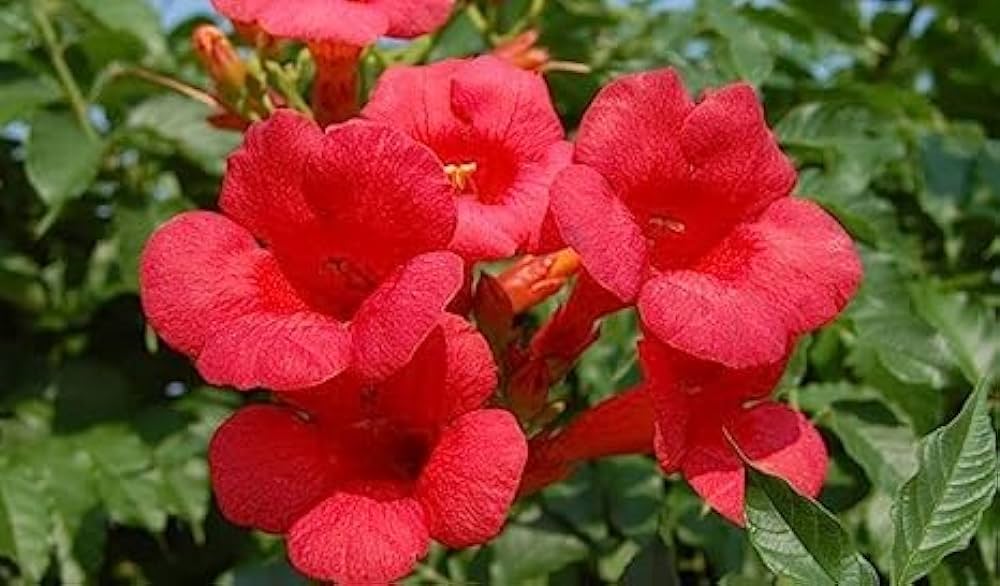
Trumpet Vines, or Campsis, flaunt a stunning pinkish-orange hue with a delicate pink outline on their corollas, making them instantly recognizable in the world of orange flower identification.
These vibrant flowers require minimal watering and are best suited for garden planting due to their potential size.
Adequate soil drainage is essential for their well-being.
Trumpet Vines can add a pop of color and a dash of elegance to any garden.
Their distinctive appearance and low-maintenance nature make them a beautiful choice for those seeking a touch of vibrant orange in their outdoor space.
Identification: Recognize the stunning pinkish-orange hue with a pink outline, suitable for minimal watering.
18. Potentilla (Potentilla spp)
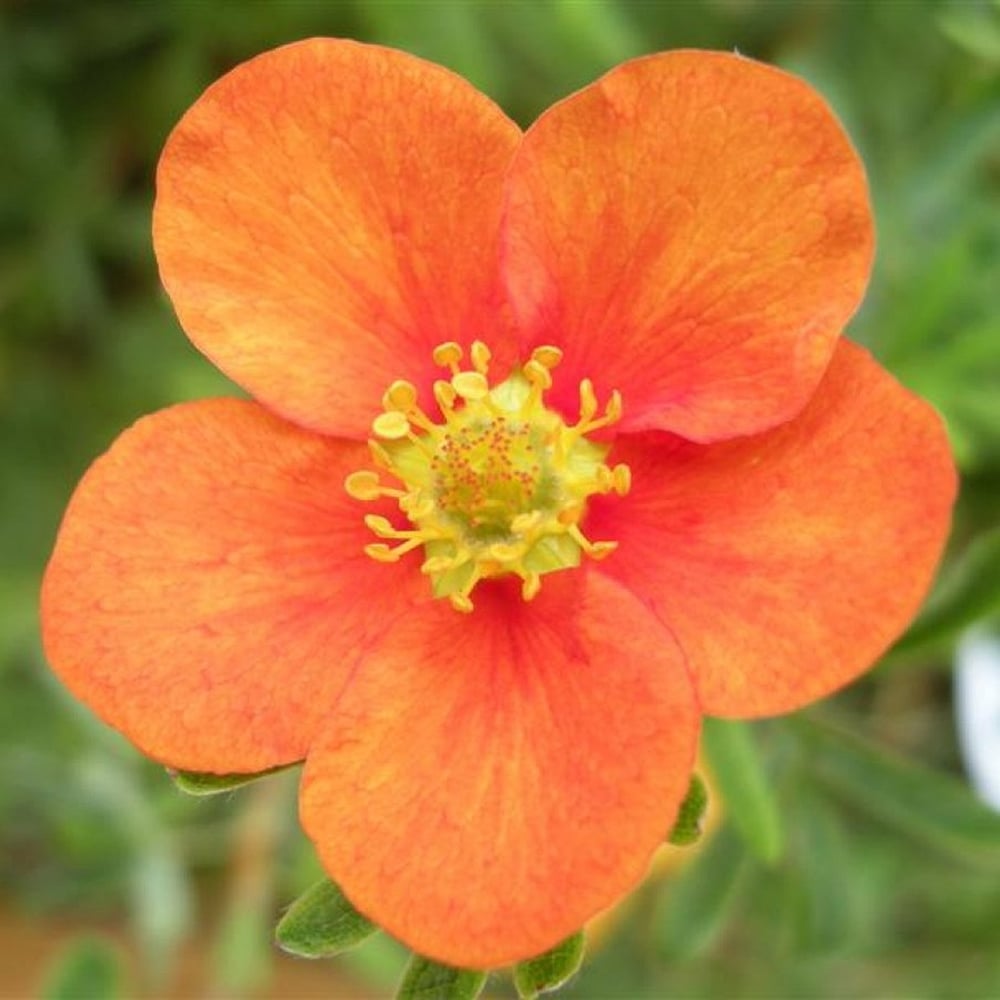
Potentilla, bearing petite orange flowers, is unique in that it doesn’t form a typical bush, but with proper care and trimming, it can maintain a bushy appearance.
These flowers are well-suited for urban environments as they are pollution-resistant and can even survive drought conditions.
They attract various butterflies and insects, aiding in pollination.
When it comes to orange flower identification, Potentilla’s wild nature and resilience make it a versatile choice.
Its ability to thrive in a range of conditions and its contribution to pollination make it an attractive addition to any garden, urban or rural.
Identification: Look for petite orange flowers, suitable for urban environments and resistant to pollution and drought.
19. Cock’s Comb (Celosia Argentea)

Cock’s Comb, scientifically known as Celosia Argentea, is a sun-loving orange flower renowned for its unique appearance.
Its exotic and wild beauty adds a carefree charm to any garden. Typically an annual plant, it should be planted in spring or summer.
Celosia requires warm climatic conditions and can’t survive temperatures below 15 degrees.
For those interested in orange flower identification, Cock’s Comb is a distinctive choice with its vibrant orange hues and whimsical appearance.
It brings a sense of playfulness and individuality to your garden.
Identification: Identify by its sun-loving nature and whimsical appearance.
20. Zinnia (Zinnia spp)
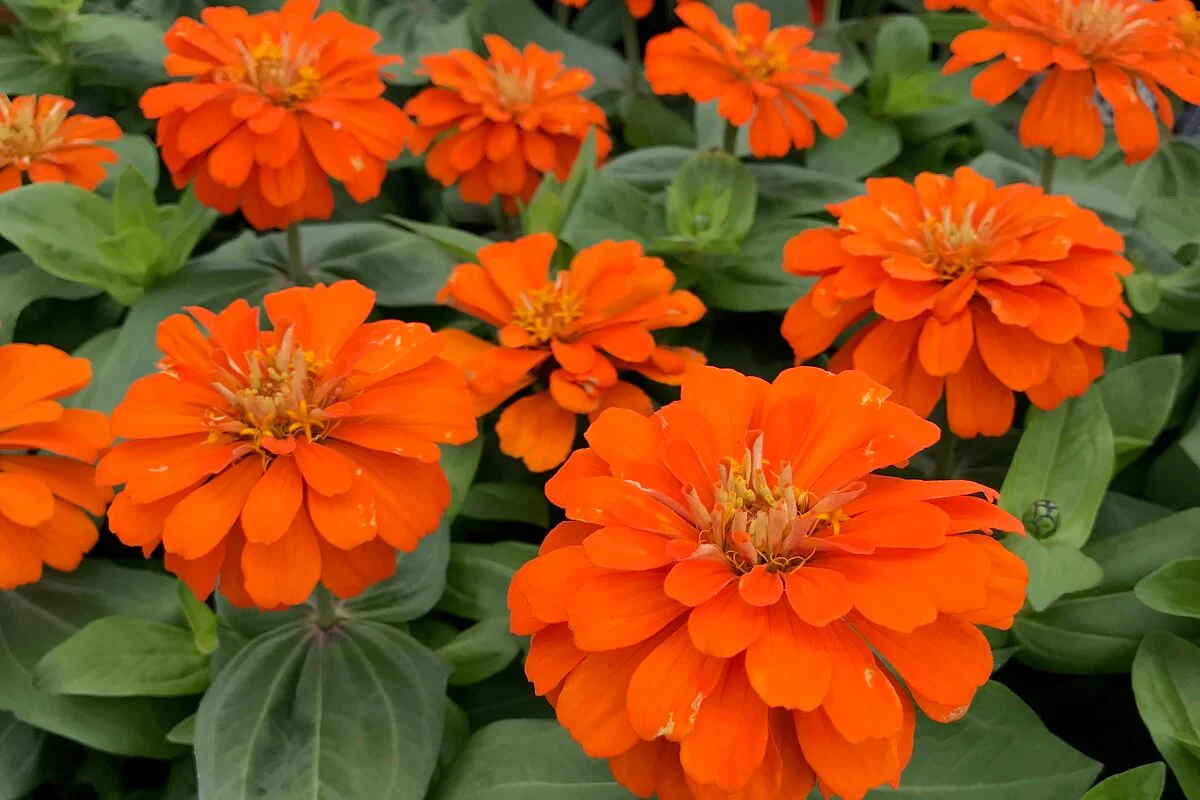
Zinnias, with their vibrant orange flowers, are a warm and inviting addition to any garden.
These flowers are easy to grow, making them suitable for gardening enthusiasts of all levels.
They thrive in fertile, well-drained soil with a pH range of 5.8 to 7.3. When seeking identifiable orange flowers, Zinnias are a top choice.
Initially, regular watering is necessary, but as the plant matures, occasional watering suffices.
Their cheerful and straightforward blooms bring a burst of color and joy to your outdoor space, attracting hummingbirds and butterflies for an even more enchanting garden.
Identification: Recognize easy-to-grow, cheerful blooms in fertile, well-drained soil.
21. Beberis Darwinii (Darwin’s Barberry)

Berberis Darwinii, commonly known as Darwin’s Barberry, is a delightful addition to any garden seeking a splash of orange flowers
This evergreen shrub produces tiny and fragile orange flowers, adding a charming burst of color to your outdoor space.
These blossoms typically bloom during the spring season, creating a captivating visual spectacle.
Berberis Darwinii reaches a height of 1.8 to 2.8 meters, making it a versatile choice for various garden layouts.
For successful growth, ensure your Darwin’s Barberry is planted in well-drained and moist soil with a pH ranging from acidic to neutral.
While they don’t demand large quantities of water, thorough watering during establishment is essential.
Identification: Notice tiny and fragile orange flowers on this evergreen shrub.
22. Pot Marigold (Calendula officinalis)

Pot Marigold, scientifically known as Calendula, is a radiant orange flower belonging to the daisy family, making it an appealing choice.
This perennial plant adds a touch of natural beauty to your garden or windowsill.
Pot Marigold thrives in full sun but benefits from shade during hot summer periods.
It prefers fertile, well-drained soil with a pH ranging from acidic to neutral. During initial growth stages, frequent watering is necessary to establish strong roots.
Beyond its aesthetic allure, Pot Marigold has garnered attention for its medicinal properties, containing essential oils and substances that can aid in healing rashes.
This versatile flower not only adds vibrancy to your garden but also positivity and a touch of spirituality.
Identification: Look for radiant orange flowers in sunny climates with medicinal properties.
23. Miss Huff Lantana (Lantana camara ‘Miss Huff’)
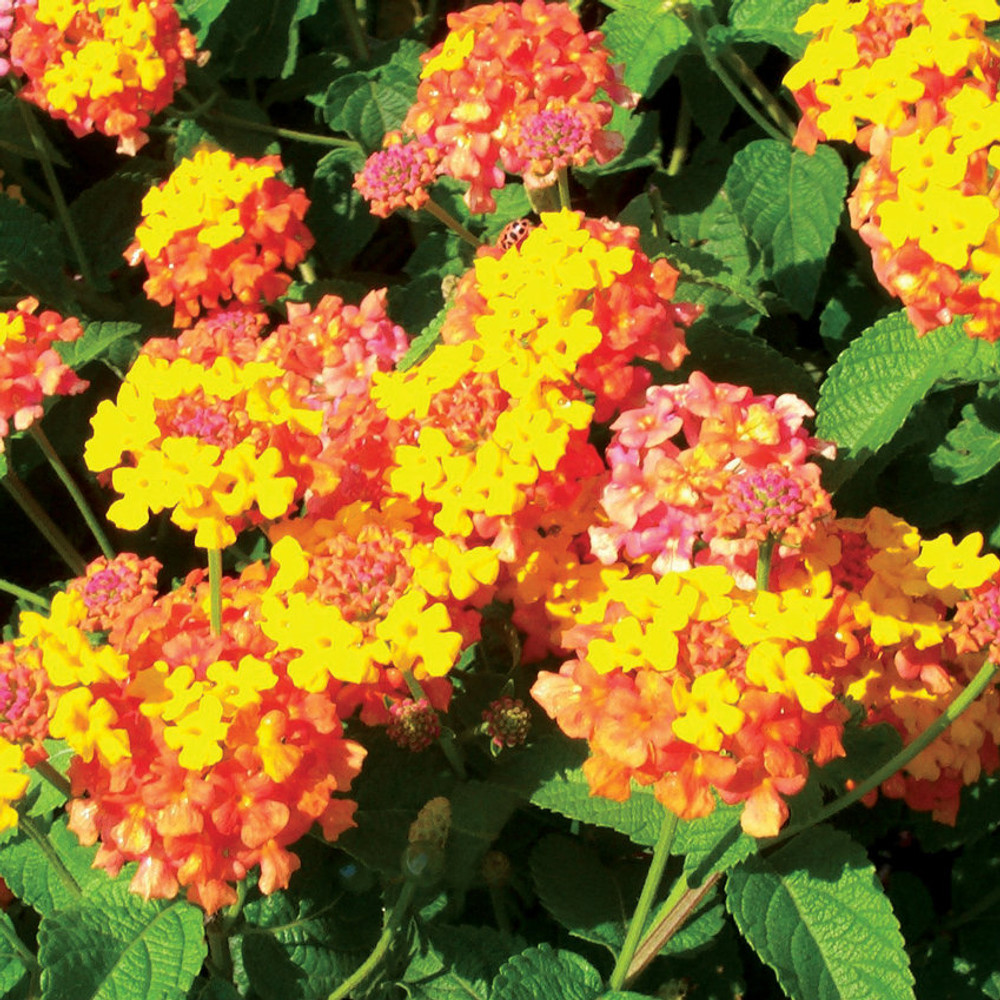
Miss Huff Lantana is a captivating orange flower easily distinguishable in the realm of orange flowers
This resilient shrub is both annual and perennial, offering a burst of color to your outdoor space with minimal maintenance.
Growing up to 6 feet in height, Miss Huff Lantana thrives in full sun and requires occasional watering.
It boasts a delightful blend of citrusy, fizzy, and sweet scents, creating a pleasant atmosphere in your garden.
While this orange flower produces fruits, they are not suitable for consumption, and prolonged skin contact with the leaves can cause minor irritation.
Identification: Recognize the resilient shrub with a blend of citrusy, fizzy, and sweet scents, thriving in full sun.
Conclusion
In the realm of horticulture, orange flowers stand as radiant beacons of beauty and positivity.
As we conclude our exploration of these vibrant blooms, we have uncovered a myriad of orange flower varieties that can adorn your garden, yard, or even your balcony.
Beyond their aesthetic appeal, these orange flowers have proven to be more than mere ornaments.
The journey of orange flower identification has shown us that these blossoms are not just symbols of hope and joy but also agents of positivity, healing, and nature’s intricate beauty.
So, whether you choose the cheerful Marigolds, the elegant Daylilies, or the exotic Kalanchoe, these orange flowers are sure to brighten your surroundings and infuse your life with the vibrancy of nature.
What are you waiting for, folks? Go, get those orange flowers, and spice up the look as well as the scent of your garden!

